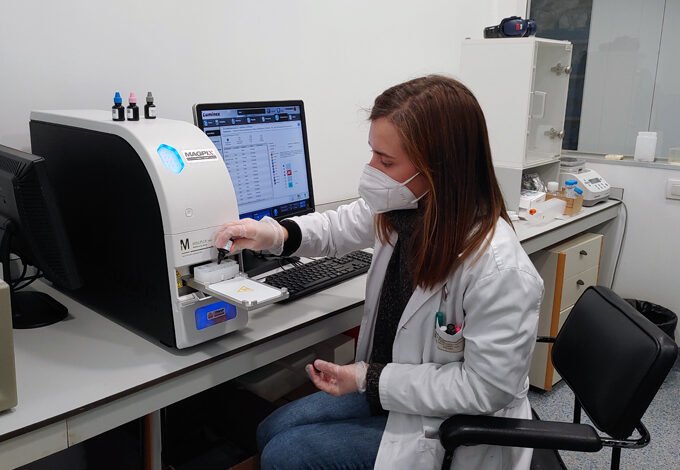
What is ELISA Assay?
The enzyme-linked immunosorbent assay (ELISA) is a test that allows the rapid detection and quantification of molecules such as proteins, peptides, and antibodies. The ELISA immunoassay uses antibodies to detect target antigens through highly specific antigen-antibody interactions. In the laboratory, researchers employ the ELISA method to detect the presence of antibodies in blood samples. This approach allows the diagnosis of various infectious diseases such as HIV, hepatitis, and Lyme disease.
Types of ELISA Assay
ELISA immunoassay can be of the following types:
The direct ELISA method immobilizes the target antigen on the plate and allows it to bind to a single conjugated detection antibody. This technique is rapid and easy to execute. However, using a single antibody renders it less specific, with the potential for high background noise.
The indirect ELISA immobilizes the target antigen on the plate and is incubated with a primary unconjugated detection antibody and later with a secondary conjugated antibody. While this method amplifies the signal via the secondary antibody, there is a scope for cross-reactivity owing to this antibody.
The sandwich ELISA utilizes two specific antibodies that sandwich the target antigen between them. The plate is coated with the capture antibody, followed by adding the sample containing the target antigen. After that, a conjugated detection antibody is added. Compared to the other ELISA methods, sandwich ELISA displays very high sensitivity and specificity. However, sandwich ELISA has a time-consuming and complex protocol.
Lastly, competitive ELISA is usually used to detect small molecules that are otherwise difficult to be sandwiched between two large antibodies. Instead of adding a conjugated detection antibody as done in the sandwich method, competitive ELISA uses a conjugated antigen that competes with the target antigen for binding with the capture antibody. While this method can quantify small molecules and hormones, it is less specific since it uses only a single antibody.
Choosing the Correct ELISA kit
Understanding the underlying principles of the different ELISA assays is the prerequisite to selecting the most appropriate kit for performing ELISA lab experiments and adopting good practices laboratory.
Several factors determine the choice of the kit. The target analyte is one of them. While competitive ELISA can detect small molecules, the sandwich method conveniently detects larger proteins.
The sample to be studied is another determinant. Based on the sample source, e.g., human, mouse, rat, and other classical models, one may choose validated ELISA kits. However, if the sample belongs to a non-classical model, one might need to choose a kit that is validated on a species bearing homology with that of the sample.
The choice of the kit is also determined by whether the study is qualitative or quantitative since ELISA allows both types of analysis.
Must Read: Validation and Quality Control in ELISA Services: Ensuring Reliable Results
The requirements of sensitivity and specificity of detection are also factors that govern the choice of an ELISA kit. High sensitivity and specificity are the two key advantages of sandwich ELISA.
The choice of an ELISA kit is also determined by whether the researcher is ready to undertake a complex and time-consuming protocol (e.g., sandwich ELISA) or is looking for a simple and rapid method (e.g., direct ELISA).
The ELISA method can employ multiple detection methods, including colorimetric, luminescent, and fluorescent techniques. Thus, the preferred detection method also dictates the choice of the ELISA kit.
The kits also differ in terms of the antibodies they contain; thus, the type of antibodies to be used in the ELISA assay, i.e., monoclonal or polyclonal antibodies, also helps to select the most appropriate kit.
Lastly, the choice of the kit is also determined by the sample amount. When the analyte present is less, it is judicious to choose a kit that offers detection with high sensitivity.
In addition to the conventional types of ELISA assays, multiplexed ELSA allows the detection of multiple analytes in a sample. Hence, the choice of a suitable kit is also determined by whether the sample has a single or multiple analytes.
The factors discussed above help make an informed choice of the most appropriate ELISA kit for an experiment.
